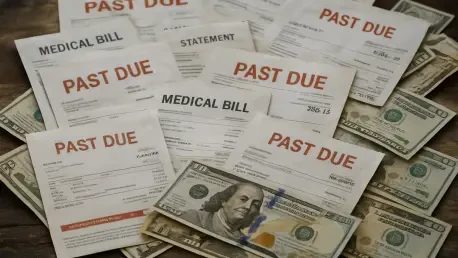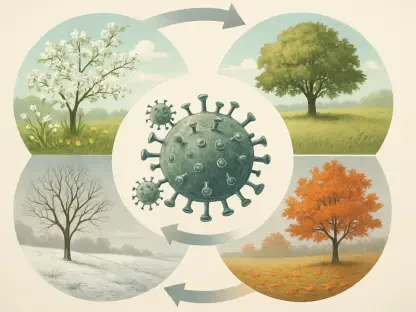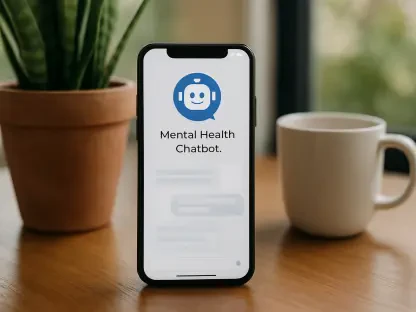The United States continues to grapple with a significant medical debt crisis, which profoundly impacts millions of Americans. With a staggering $220 billion owed to healthcare providers across the nation, the primary factors fueling this dilemma are exorbitant healthcare costs, insufficient insurance coverage, and systemic socio-economic disparities. The crisis is notably severe in Southern states, where the denial of Medicaid expansion under the Affordable Care Act has disproportionately affected Black and low-income households. Nonprofit organizations are stepping in to bridge this gap, showing an unwavering commitment to alleviating these financial burdens through targeted interventions. Their initiatives not only offer immediate relief but also highlight the pressing need for comprehensive systemic reform within the healthcare system.
The Widening Chasm of Medical Debt
High Healthcare Costs and Financial Vulnerability
Anita’s story poignantly highlights the financial precariousness faced by countless Americans, even those with health insurance. Despite having employer-sponsored insurance, Anita was overwhelmed by a hefty $3,000 deductible that proved burdensome for her budget. This experience is all too common, as many insured individuals struggle to cope with surmounting medical bills due to high deductibles and out-of-pocket expenses. This reality is a pervasive issue, where only a few unexpected medical events can swiftly plunge families into debilitating debt. For those without adequate savings or financial support, these expenses can become a relentless cycle of financial despair, trapping families in long-term indebtedness. These challenges underscore the deficiencies in the current insurance framework, questioning its ability to truly shield individuals from financial ruin.
Adding to this, individuals from marginalized communities, especially Black households, face exacerbated financial risks. Studies have shown when insured, Black households still grapple with medical debt at rates similar to those of uninsured non-Black households. Such statistics illuminate deeper, systemic inequities within the healthcare system that disproportionately disadvantage racial minorities and low-income families. Despite efforts to bridge these disparities, the persistent lack of affordable healthcare access and coverage for these communities remains a critical concern. The intersection of race, economic status, and healthcare accessibility continues to be the fulcrum of a nationwide challenge that demands urgent and holistic policy interventions to foster an equitable healthcare environment for all.
Legislative Changes and Their Consequences
The medical debt crisis is set to deepen further, exacerbated by recent legislative measures. The passage of the GOP tax bill looms ominously, poised to strip millions from Medicaid and push healthcare costs even higher. This legislation is projected to increase the medical debt burden, specifically among lower-income families, by as much as $22,800. This anticipated surge stands to exacerbate already strained financial situations, primarily impacting over 13 million Black and more than 19 million Latino Medicaid beneficiaries. The fallout from these policies not only causes immediate financial distress but also further widens the gap in healthcare affordability and access across racial and economic lines. As coverage diminishes, the uninsured population grows, enhancing the disparity in healthcare quality and availability, particularly in underserved areas.
Moreover, federal attempts to alleviate medical debt have fallen short. A Texas federal judge recently overturned a rule designed to expunge medical debt from credit reports. Had it been implemented, this rule could have removed $49 billion from the credit records of approximately 15 million Americans. Such systemic relief would have substantially reduced the financial woes of countless individuals and families. The ruling highlights a critical shortcoming in federal policy, a failure to unify efforts towards lasting solutions that address the entrenched roots of medical debt. The missed opportunity emphasizes the urgent need for comprehensive legislative reform that can effectively tackle these pervasive fiscal challenges.
Nonprofit Interventions Making a Difference
Efforts by Organizations Like Undue Medical Debt
Undue Medical Debt has positioned itself as a powerful player in the fight against mounting medical debt, emphasizing a compassion-driven approach. Founded in 2014, this nonprofit organization takes an innovative approach by purchasing and forgiving medical debt for qualifying individuals. Those eligible often include individuals whose household income does not exceed 400 percent of the federal poverty line or those who carry medical debt exceeding 5 percent of their annual income. By freeing individuals from financial burdens, they aim to restore economic stability and peace of mind to beleaguered families. The nonprofit has already made significant strides, recently relieving $63 million in medical debt for over 45,000 residents of New Mexico.
For the impacted communities, this debt forgiveness translates to more than financial relief; it represents a restored sense of dignity and financial freedom. The direct impact of Undue Medical Debt’s work illustrates the organization’s crucial role in reshaping lives, allowing families to redirect their resources toward other essential needs such as housing, education, and healthcare. However, despite these substantial victories, the scope of their work underscores a broader narrative—that while immediate relief is vital, systemic reforms remain essential to prevent medical debt from continuing to plague American households.
Dollar For’s Approach to Healthcare Literacy and Access
Dollar For, another pioneering nonprofit, focuses on demystifying the often complex and opaque processes surrounding charity care applications. Founded in 2012, this organization equips individuals with the necessary tools and guidance to seek charity care—a mandate for nonprofit hospitals to offer free or discounted services to those who qualify. Unfortunately, many hospitals fail to adequately inform patients about their eligibility, often leading to unwarranted billing for those qualifying for charity care. By supporting individuals through the application process, Dollar For paves the way for financial recovery, empowering individuals to reclaim control over their financial health without unnecessary debt.
Their initiative sheds light on the critical aspect of healthcare literacy—underscoring its significance not only in navigating the healthcare system but in fostering proactive engagement with available rights and resources. Dollar For envisions eliminating half a billion dollars in medical debt over the next four years as part of its mission. By addressing both individual and systemic barriers to healthcare access, they strengthen the ties between healthcare providers and patients, ensuring transparency and accountability. Such nonprofit-led efforts, while promising, underscore an ongoing need for structural reforms to ensure comprehensive and equitable healthcare for all socio-economic backgrounds.
The Path Toward Sustainable Solutions
Systemic Reform and Comprehensive Healthcare Access
While nonprofit efforts offer crucial relief, the enduring presence of medical debt calls for a comprehensive restructuring of healthcare policies. Advocates and experts alike agree that relying solely on charitable interventions is insufficient. There is an undeniable demand for broader systemic reform aimed at ensuring affordable healthcare access, reducing the chance of debt accumulation in the first place. The clear need emerging from these circumstances is the formulation and implementation of robust healthcare policies that prevent medical debt from overwhelming families. Stakeholders emphasize fostering collaborative efforts across government agencies, healthcare institutions, and community organizations to achieve transformative change.
Potential solutions could focus on measures such as expanded insurance coverage, better regulation of healthcare costs, and transparent billing practices to mitigate financial burden. Additionally, reinvigorating federal efforts to protect consumers from the adverse implications of medical debt is crucial. This multi-dimensional approach highlights the importance of proactive and preventative strategies in safeguarding families against the potential financial ruin incurred by healthcare expenses. Overall, such systemic change remains fundamental to establishing equity within the healthcare landscape, mediating financial disparities and promoting economic resilience among diverse populations.
The Role of Advocacy and Public Awareness
Anita’s narrative starkly illustrates the financial instability faced by many Americans, even those with health insurance. Despite her employer-sponsored plan, Anita struggled under a $3,000 deductible, which stretched her budget thin. This situation is common, as many insured individuals face overwhelming medical costs due to high deductibles and out-of-pocket expenses. A few unexpected medical bills can swiftly plunge families into crippling debt, especially if they lack savings or financial backing. This highlights the flaws in the insurance framework, questioning if it truly safeguards against financial disaster.
Moreover, people from marginalized communities, notably Black households, endure heightened financial risks. Research shows that insured Black households confront medical debt at similar levels to uninsured non-Black households, revealing systemic inequities in healthcare disadvantaging racial minorities and low-income families. Although efforts exist to address these disparities, the persistent lack of affordable health coverage for these groups remains a pressing issue, demanding comprehensive policy solutions to promote equitable healthcare access.









